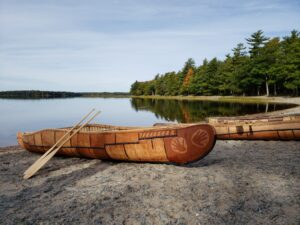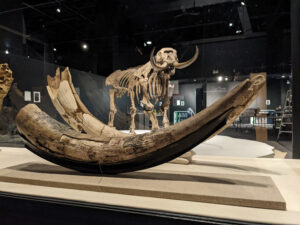
History
Canada’s long history of apple growing
A look back at how the "king of fruits" became a Canadian agricultural staple
- 574 words
- 3 minutes
This article is over 5 years old and may contain outdated information.
Sean Myles, an apple DNA researcher, is surprisingly in a bit of a pickle.
His research team, based out of an orchard in Nova Scotia’s Annapolis Valley with one of the largest apple collections in the world, has the know-how and the tools to revolutionize the way apple agriculture — maybe even all agriculture — works.
But Myles, the Canada Research Chair in Agricultural Genetic Diversity, isn’t sure if his research will ever be put to use.
“Everyone is getting out of the breeding business, and that makes our job really tough,” he says.
Due to the intense labour his research could one day inspire, Myles is unsure if he and his team will ever have a breeding program for growing new types of commercially viable apples.
“It’s cheaper to buy some new chemical and go and kill the pathogens that are killing your plants then it is to grow a new apple variety that is resistant to pathogens,” he said.
Revolutionizing traditional apple breeding
Myles works with apple DNA with the goal of producing new types of apples that taste great and are disease resistant, without the uncertainty of traditional apple breeding.
Traditional breeding is a guess and test game. When a breeder crosses two apple varieties together it creates around 300 genetically different seeds. Each seed is then planted in an orchard and as the seeds grow into trees, an apple breeder observes each tree’s fruit. If the breeder doesn’t like the fruit, the tree is dug up. This process continues until a “winner” is declared. The apples we see at grocery stores have all won at the breeder’s game of elimination.
This process takes years, says Myles. But his research may speed the process up.
For the next ten years his team will systematically measure new varieties of apples for different traits (such as disease resistance and sweetness), sequence genomes of the fruit, and then look for relationships between DNA sequences and the traits they produce.
Myles and his team may one day be able to plant thousands of new seeds, grow them up as seedlings and genetically test a small leaf portion for desirable traits. The saplings without these traits will be disposed of before they even bear fruit.
The 1,000-variety orchard
This research wouldn’t be possible without the team’s apple orchard.
The team’s orchard features more than 1,000 varieties of apples from all over the world, ranging from familiar species, such as the Golden Delicious or Macintosh, to unfamiliar species, like the wild apples of Kazakhstan, believed to be the ancestors of today’s domesticated apples.
The apple collection not only provides ample specimens for scientists to research, it also preserves the apple’s widespread genetic diversity.
“One of the reasons we establish collections like this is to preserve genetic material for the sake of maintaining genetic diversity,” says Myles. “If we lose it, we can never go back.”
Myles wants to shake the apple industry up. “We need to shuffle up these genetic combinations so we can end up with apples that could taste better and be disease resistant,” he says.
“We don’t want to be relying on apple varieties for the next 50 years that require 15 sprays a year to make them nice enough to put on grocery store shelves.”

History
A look back at how the "king of fruits" became a Canadian agricultural staple

Travel
A pilgrimage to Kejimkujik reveals centuries-old connections between descendants of Nova Scotia’s first Scottish settlers and the Mi’kmaq who saved them

Places
How Cape Breton’s Middle River became an unexpected treasure trove of mastodon fossils

Mapping
After working three summers on Halifax's Harbour Hopper, Jeremy Tupper could probably give you a city tour in his sleep. Fortunately he won't have to because there is a web app…